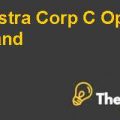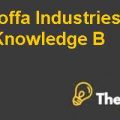chestnut foods Case Study Solution
Introduction:
In 1887, the Chestnut Foods commence its operations when a 22-year-old entrepreneur named Otto Chestnut opened a bakery in North Minneapolis.Since its incorporation, the Chestnut Foods had acquired various companies under its brand. Due to the aggressive inorganic growth, the company has seen tremendous growth in its operations.Currently the company has two divisions Food division and Instrument Division. The Food division produces a wide range of prepackaged, fresh and processed food for the retail and food services. The second division i.e. Instrument division, is responsible for providing a vast range of quality control and automation services which were used in the day to day operation of the company
The revenues of the food division have remained quite stable for a long time; the food division achieved a growth rate of two percent per year and according to Forbes food industry is the biggest industry in the world (Murray, 2007). Despite the success of the food division, the food industry remains highly competitive, and the profits margins for all the players appears to be quite low, however, the Chestnut Foods have achieved high customer loyalty, and the majority of the customers rated the products of Chestnut high in term of quality, flavor, and freshness.
Twenty percent of the total revenue of Instrument division comes from the Chestnut’s production department, the main operation of the Instrument Division is to produce equipment and automation support to the large numbers of food processors throughout the North America. Due to the nature of the operations, the Instrument Division have to invest heavily and regularly in the research and development and they have to continuously update their fixed assets in order to achieve high quality of finished goods and to maintain the level of costs as low as possible. The performance of the Instrument division is improving, and in the year 2013, the revenues had been grown by almost twenty percent.
CHESTNUT FOODS Harvard Case Solution & Analysis
Control of Mr. Murr:
It can be said that Van Murr had purchased the holdings in the Chestnut because its shares are trading at a substantially lower amount and the growth prospects are not so bad of the company. The food division is achieving a stable rate of growth while the instrument division is growing a tremendous rate. Mr. Murr is soliciting control in the management of Chestnut because the growth in share price is expected to rise in the future. It can be argued that share price might further increase if appropriate strategies are implemented. The main reason for soliciting the control of Chestnut by Van Murr is that he wants to take benefit from the increasing profits and revenues of Instrument division. Mr. Murr wants to sell the Instrument Division from the portfolio of Chestnut, the main reason for this is that the food division is underperforming while the Instrument division is performing well. It is highly likely that the shareholders will receive higher sum if they sell Instrument division..............
This is just a sample partial work. Please place the order on the website to get your own originally done case solution.












